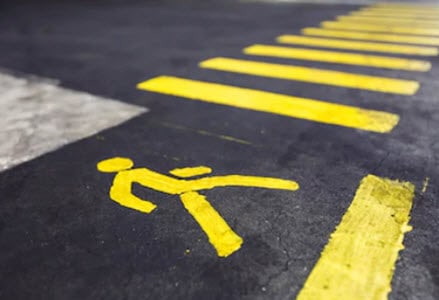
Most pedestrian accidents happen outside marked crosswalks. Since the tortfeasor (negligent driver) is traveling at or near top speed at the moment of impact, pedestrian injuries are extremely serious. At impact speeds under 30mph, the pedestrian fatality rate is under 10 percent. The death rate catapults to 90 percent at speeds above 50mph.
Driver inattention, generally due to impairment and/or distraction, typically causes terse crashes. Even if the victim wasn’t in a marked crosswalk and crossing with the light, a Columbia personal injury lawyer can obtain substantial compensation, if the tortfeasor was legally negligent. This compensation usually includes money for economic losses, such as medical bills, and noneconomic losses, such as pain and suffering.
TBI
The subsequent motion in a pedestrian accident, rather than the initial impact, usually causes a Traumatic Brain Injury.
A person’s brain isn’t much larger than an oversize coffee mug. So, when a victim falls, the brain violently slams against the inside of the skull. This impact causes injuries that are difficult to diagnose.
Initial TBI symptoms, such as soreness and disorientation, mimic accident shock, a temporary condition that usually goes away on its own. Therefore, many victims don’t get the treatment they need, and their TBIs get progressively worse. Frequently, the injuries worsen until they are fatal.
PTSD
Post Traumatic Stress Disorder is a specific kind of brain injury. Other than combat stress, car crashes are the leading cause of PTSD.
An extremely stressful situation, like sustaining a catastrophic (life-threatening) injury, alters the brain’s chemical composition. This imbalance causes symptoms like:
- Flashbacks,
- Anger,
- Nightmares,
- Depression, and
- Hypervigilance.
Since PTSD has a chemical cause, it has a chemical solution. However, most PTSD drugs either only treat some symptoms or are highly experimental. Either way, there’s a good chance that medical treatment won’t fully address victims’ symptoms, condemning them to struggle through life with a serious brain injury.
Broken Bones
Brain injuries usually aren’t impact related, but broken bones usually are impact related. The impact is so hard that it usually shatters bones, instead of simply breaking them.
As a result, doctors must use extreme measures, such as metal implants, to surgically reconstruct these crushed bones. Since many pedestrian accident victims are in no shape to tolerate lengthy surgery, doctors often perform several procedures.
The additional medical intervention means a longer recovery time and therefore longer physical therapy. Even after physical therapists work with victims for several months, the victim usually has a permanent injury, like a partially frozen shoulder.
Internal Injuries
A combination of impact and motion causes internal organs to smash against each other. Since these organs don’t have protective skin layers, even a minor cut usually causes severe bleeding.
Following a familiar refrain, these injuries are hard to diagnose. Emergency responders are understandably more concerned with visible trauma injuries. As a result, when victims reach hospitals, they may have already lost a fifth of their blood supplies.
Nerve Injuries
When pedestrian victims fall, they naturally extend their arms to break their falls. This natural reaction often snaps nerves in the brachial plexus bundles, which are located under the arms. A brachial plexus injury usually means partial paralysis. These injuries are normally permanent.
Reach Out to a Tough-Minded Richland County Lawyer
Injury victims are entitled to significant compensation. For a free consultation with an experienced personal injury lawyer in Columbia, contact the Marc Brown Law Firm. You have a limited amount of time to act.
Source:
aaafoundation.org/impact-speed-pedestrians-risk-severe-injury-death/